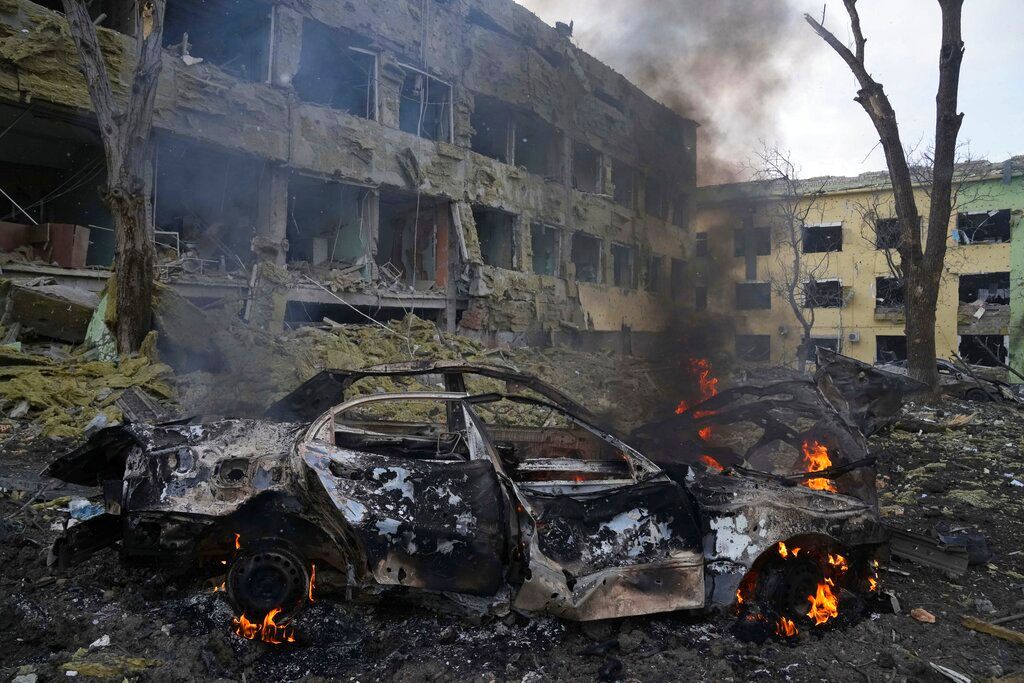More than 1,700 Ukrainian forces surrendered to Russian forces after holding out for weeks inside the Azovstal steel plant in Mariupol, Ukraine’s important port city.
It is a crucial claim for Russia in its quest to connect the occupied Crimea peninsula to the west with territory held by pro-Russian rebels to the east. It is located on the Sea of Azov.
The following are the important developments in the battle for Mariupol, which had a population of 441,000 before Russia invaded Ukraine on February 24.
Bombed and encircled
Moscow’s artillery begins shelling Mariupol on March 2.
The mayor claims that Russian soldiers and pro-Russian fighters are attempting to “impose a blockade” by shutting off the food supply and key infrastructures like water, electricity, and heating.
Also read: How Russia is changing its military recruitment criteria amid Ukraine conflict
Maternity ward bombed
On March 9, Russia bombs a building in Mariupol housing a maternity unit and a paediatric hospital, killing three people, including a young child.
Ukraine and the European Union have accused Russia of committing a war crime. Russia claims the building is a safe haven for Ukrainian nationalists and that the very pregnant woman being evacuated is an actor.
First evacuations
The evacuation of thousands of residents from the city through a humanitarian corridor begins in mid-March.
Previous evacuation attempts had failed, with both sides accusing the other of failing to put out the fire.
Theatre destroyed
On March 16, Russian air attacks destroy a theatre that housed hundreds of civilians, predominantly women, and children. Reaching people imprisoned in a subterranean bunker takes days.
Authorities in Ukraine think that 300 people were killed.
Moscow denies responsibility for the attack, blaming Ukraine’s far-right Azov battalion, which is located in the city.
Also read: ‘It is hell there’: Volodymyr Zelensky claims Russia has destroyed Donbas
Hellish battle to survive
On March 21, Kyiv rejects the first Russian capitulation ultimatum sent to Ukrainian soldiers in the city.
Civilians who flee in their own vehicles report catastrophic scenes of streets littered with dead bodies and a horrible struggle to survive famine, thirst, and cold in the face of Russian shelling.
Last battle
On April 4, Mariupol’s mayor declared that the city was 90% damaged.
A week later, Ukrainian soldiers say they are preparing for a “last battle” at the huge Azovstal steel plant, the city’s last holdout against Russian control.
Over the next week, Russia presents a series of ultimatums to the troops stationed there, but they reject them.
According to regional authorities, the death toll in the city may approach 20,000 people.
Mariupol ‘liberated’
On April 21, Russian President Vladimir Putin considers Mariupol’s “liberation” a “success.”
He directs the Russian forces to besiege the Azovstal factory rather than storm it, “so that not even a fly can escape.”
Also read: Volodymyr Zelensky slams Russia for ‘deliberately killing as many as possible’
Women, children rescued
On May 7, Ukraine’s government declares that all women, children, and the elderly who were sheltering in the facility, totaling roughly 500 persons, have been evacuated.
Pro-Russian forces in Mariupol stage a procession through the devastated districts on May 9 to commemorate the Soviet victory over Nazi Germany during WWII.
Five days later, a Ukrainian group, Kalush Orchestra, wins Eurovision and uses the opportunity to call for help for the soldiers trapped behind Azovstal.
The first batch of over 260 Ukrainian soldiers surrenders to Russian forces on May 17.
They are captured by Russian forces, and the injured are transferred to a hospital in a Russian-controlled area of the Donetsk region.
According to Moscow, 1,730 Ukrainian fighters surrendered on May 19.
Ukraine sought to exchange them for Russian prisoners of war, but a pro-Russian rebel leader said some would be tried.
‘Complete liberation’
On May 20, Russia announced that its troops had “completely liberated” the besieged Azovstal steel complex in Mariupol.
Major General Igor Konashenkov, a spokesperson for the Russian Ministry of Defense, stated in a statement that the “last group of 531 militants surrendered,” referring to the Ukrainian fighters who had been resisting the Russian assault on the plant for several weeks.
According to Konashenkov, the Azov Regiment commander “was taken out of the territory of the plant in a special armored car.”







